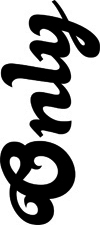only magazine
↵ home
Battle In Heaven

By Adam Thomas
Monday May 1, 2006
The New Surrealism, Just Don’t Call It That
This movie opens and closes with a blowjob. That said, it is hardly an exercise in exploitation, but more an approach towards the rediscovering of aesthetics. Obviously shot in a studio against a grey backdrop, this sequence is more like a dream or even a memory, than an actual part of the film; a film that is essentially a simple story of a man who begins to lose his mind. But the film also dares to take us through this isolated mindscape and challenges us both with content and composition. If we are to understand surrealism to be the real functioning of thought, outside of moral implications or aesthetic boundaries, then second time director; Carlos Reygadas’ Battle in Heaven is an achievement in a new kind of surrealism, found not in the world of dreams but in the real world around us. Set in Mexico City, which had the second highest number of kidnappings in the world in 2003, the story follows Marcos, an unassuming and hefty chauffeur to a military General (and by proxy his sexy daughter). Marcos, along with his equally rotund wife kidnaps a child. When the child dies, Marcos starts to unravel mentally, and despite the fact we don’t know this until part way through, this is where the film begins.
While the plot is minimal, Reygadas uses the camera in its purest and most isolating way, capturing conscious, internally personal moments in panorama. By also incorporating intelligent and minimalist sound design, characters’ perspectives are reflected by framing things in the right way, creating a film that is a tapestry of cinematic reality and a strange permutation of surrealism; a weave that at the same time defies the traditional definition of both. It has all the recognizable symbols and signifiers of classic surrealism: religious iconography, long Felliniesque processions, strange, oversized appeals to nationalism; all of which however, play out in the real world, without any form of juxtaposition of meaning. These are actual parts of Marcos’ world, as is the reality of the kidnapping. By capturing extended, uninterrupted moments through the focused eye of a lens, it forces us to recognize the unique beauty and composition that exists in the mundane world of the everyday.
Throughout the film Reygadas’ camera finds aesthetic beauty in things we might conventionally look away from. Whether it is the folds of fat rolling up against each other as Marcos and his wife have sex, or in a static shot of Marcos driving, the camera provides the frame of mind for both the viewer and the characters. The film is full of these long, almost real-time moments and when a character’s, (particularly Marcos’) point of view is expressed through the camera’s perspective we are forced into their mental state. We see what they see, and in a sense we, like them, are unable to escape the emotional prison of their own minds. The result is unsettling and provocative, but more importantly it is a rare achievement in cinema. And because there is no narration or voice-over to carry these thoughts, only sight, sound and action, it brings about the existential consideration that if hell is other people then it makes sense that a battle in heaven is within our selves.
Battle in Heaven plays and the Vancity Theatre May 1-3 and is released on DVD on May 9th
